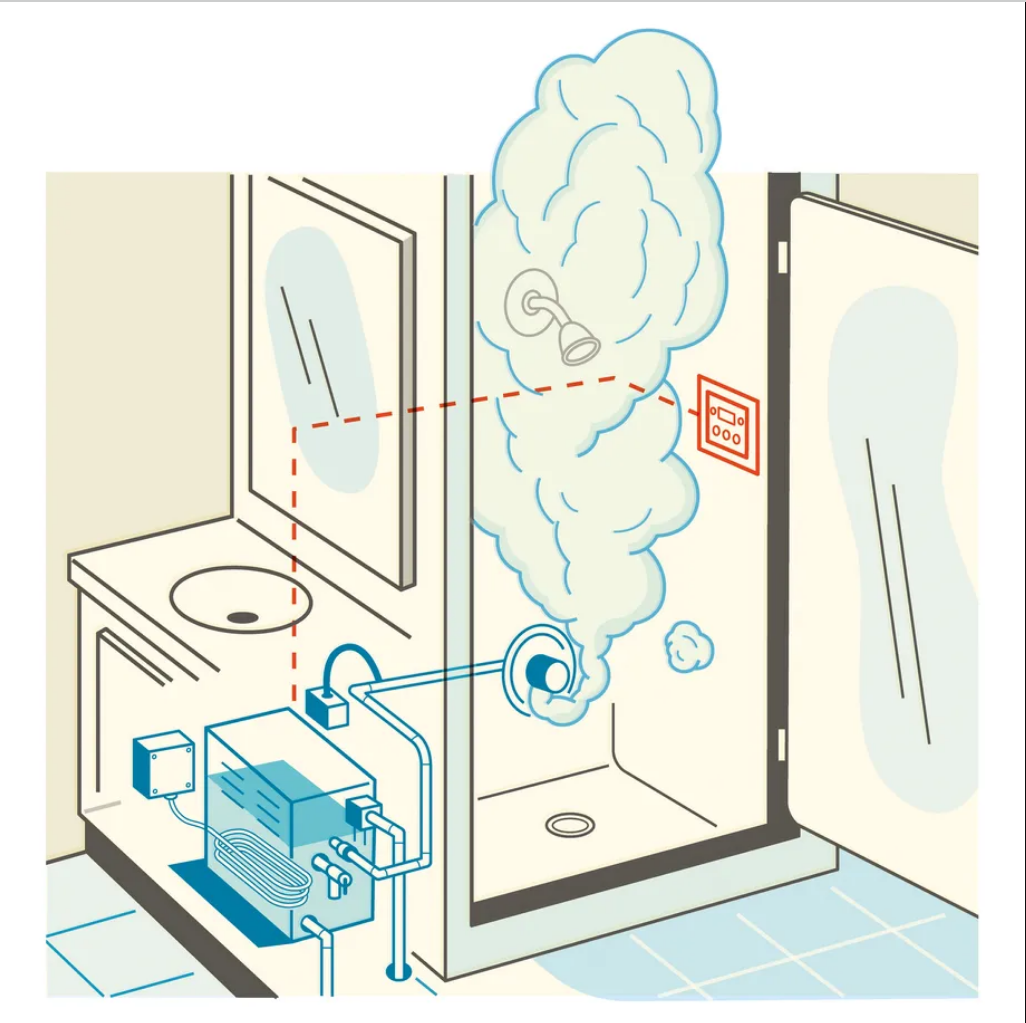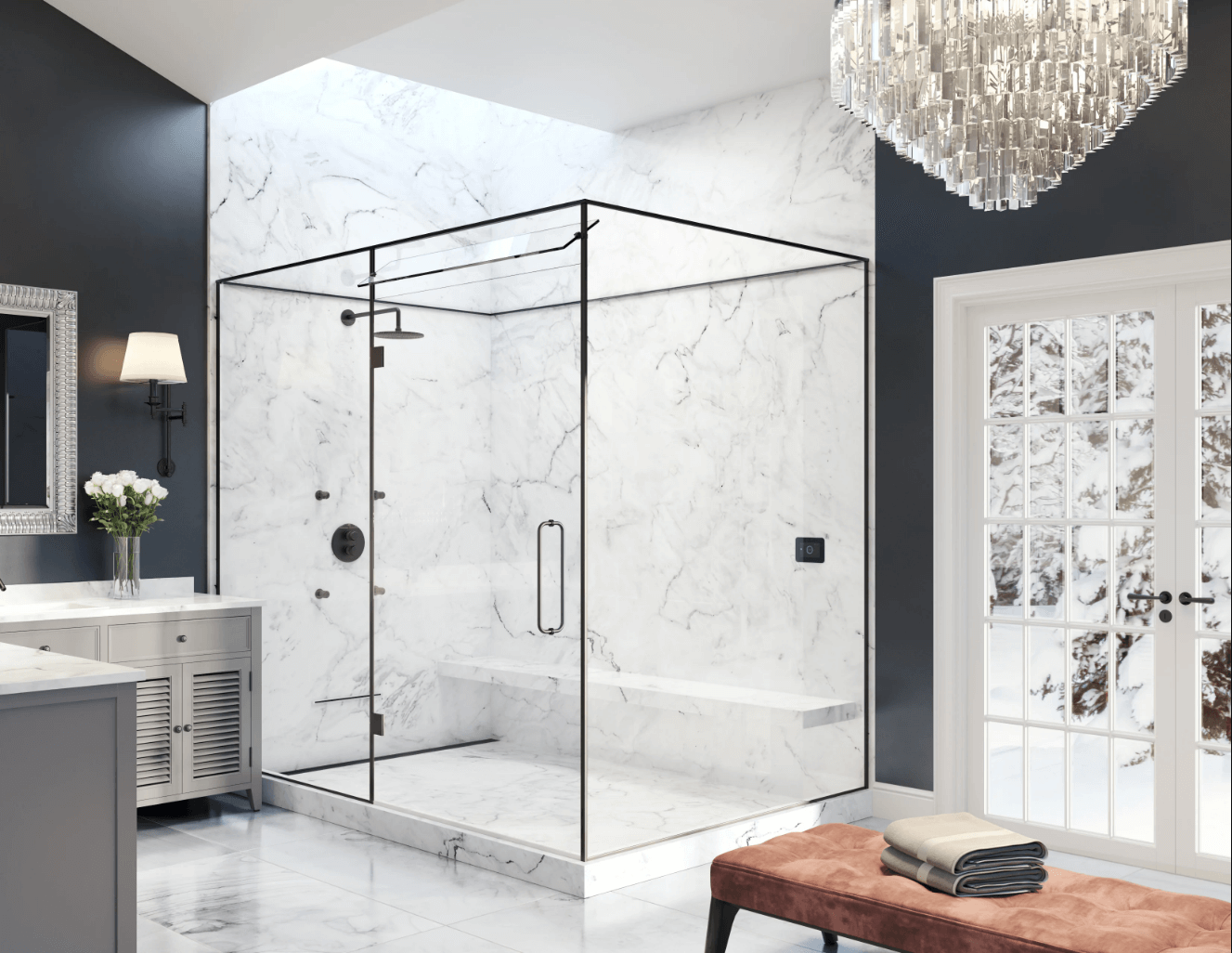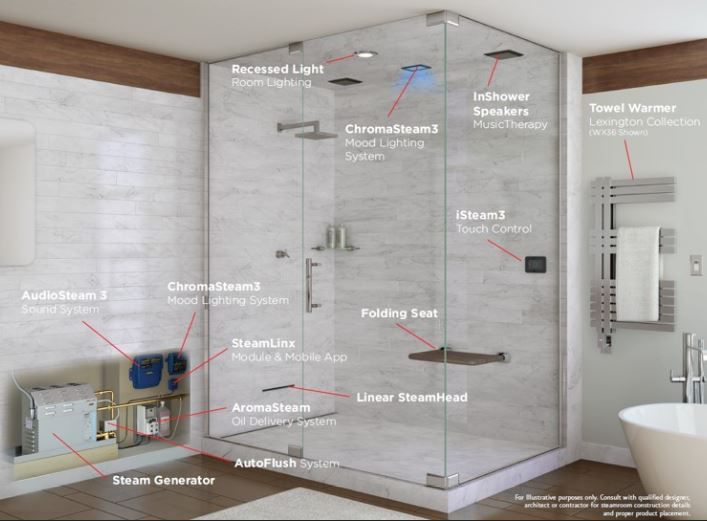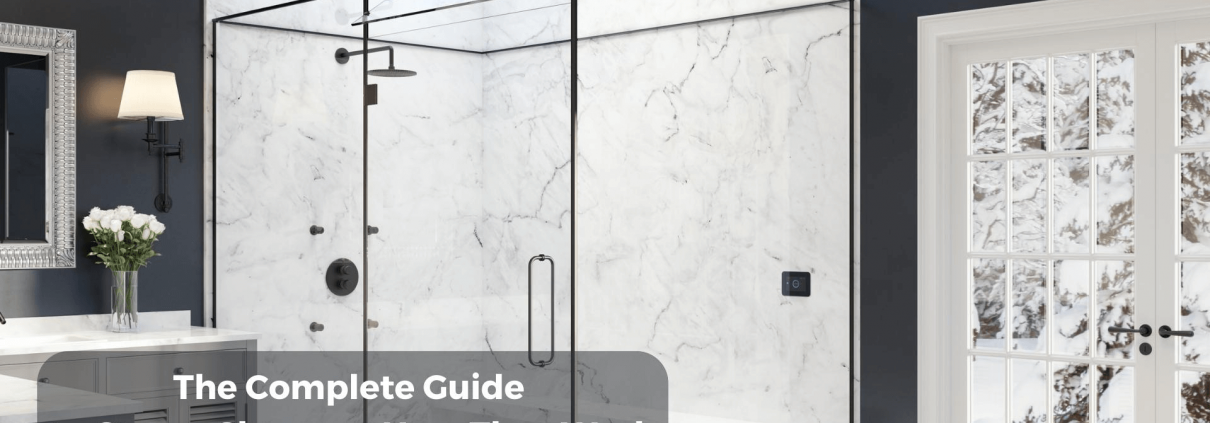The Complete Guide to Steam Showers: How They Work, Cost and Installation
A steam shower is a high-end bathroom appliance that has recently gained popularity. If you’re thinking of adding one to your home, you may be wondering how they work, what the cost and installation process is like, and more. In this blog post, we will provide a comprehensive guide to steam showers that will answer all of your questions! Whether you’re looking to add a touch of luxury to your home or simply want to make your showering experience more enjoyable, steam showers are definitely worth considering. So why wait? Read on to learn everything you need to know about steam showers!
How Does A Steam Shower Work?

The design of a steam shower is rather simple. To generate steam, just press the digital controls in the shower cubicle. This causes an electronic valve to open, allowing around a gallon of cold water to enter the breadbox-sized steam generator. The generator’s electric element then heats the water to a boil, much like a plug-in teakettle. The hot vapor is sent via a pipe to the steam head, or disperser, which fills the stall with tropical moisture that never rises over 118 degrees Fahrenheit.
Relax for as long as you want: 20 minutes of steaming uses just 2 liters of water. According to this logic, bathing with steam is a “green” option. (A water-saving showerhead sprays around 50 gallons of water in the same amount of time.) However, your power bill will undoubtedly rise. Steam units are scaled according to the capacity of the stall in cubic feet, its form, and what it’s lined with. A standard 4-by-5-by-8-foot ceramic tile stall (160 cubic feet) needs at least a 7-kilowatt generator. You’ll need twice as much steam-generating capacity for a stone-tiled stall. If your electricity rate is 10 cents per kilowatt hour, running a steam shower for 20 minutes will cost you about $1.40.
Steam Shower Installation and Costs

Installing one of them at home need the assistance of a few professionals. First, you’ll need to find a dealer. The dealer will determine the optimum location to conceal the generator, which must be within 25 feet of the shower stall. (A linen closet or walk-in closet will suffice if the equipment is conveniently accessible for maintenance.) You’ll then need a tiling contractor and a shower-door installer to construct a steam-proof enclosure. When that’s completed, the dealer may send in a plumber to connect all of the pipes and an electrician to connect the generator’s 220-volt electric connection and digital controls.
Cost of a Steam Shower:
- Average Cost: $4,200
- Highest Cost: $6,100
- Lowest Cost: $2,500
A prefabricated steam shower will cost you between $1,000 and $5,000, with most units costing between $2,500 and $4,000. Since typical steam showers are 3-by-3-by-7 feet in size, this works out to around $70 per square foot on average. If you decide to install a prefabricated steam shower into your existing shower area, bear in mind that the shower must be big enough to accommodate the steam shower insert. If this is the case, you’ll simply need to install a steam generator, which may save you a lot of money. Expect to spend between $2,300 and $5,500 for this.
Prefab Steam Shower Costs:
- Installation:$500 – $600
- Unit and Generator:$2,300 – $5,500
- Total:$2,800 – $6,200
Custom Steam Shower Costs:
- Installation: $1,000 – $6,000
- Materials: $2,500 – $6,500
- Steam generator:$400 – $2,000
- Total:$4,000 – $15,000
Major Components of a Steam Shower for Installation

Are you wondering what you get for your money when you install a steam shower in your bathroom? The following is a rundown of the many items that may be expected to be added to the overall price of your projected steam shower:
Prefabricated Steam Shower Insert:
There is a price range of around $2,000 to $5,000 for the steam shower inserts that are available at Home Depot. When it comes to setting up a steam shower, this will be the most significant factor to consider. As was just shown to you above, the price of a bespoke model may easily be three times as costly as this one.
Glass Door and Walls:
You will need to include this expense as well if you will want a specialized room to be developed in order to accommodate your steam shower. In order to avoid the accumulation of an excessive amount of moisture within the bathroom, steam showers feature glass enclosures, which include the top of the shower. The price of glass walls may range from $600 to $2,000, while the price of glass shower doors can be anywhere from $500 to $1,500. Glass that is thicker will cost more initially, but it will be less likely to need to be repaired or replaced.
Steam Shower Wall Tile Installation:
Because steam showers often provide both health advantages and a sense of style, you may want to consider installing tiling that is aesthetically pleasing in your model. There is a price range of between $600 and $1,400 for the installation of wall tiles in a steam shower.
Steam Generator:
It doesn’t matter whether you go with a prefab or a bespoke unit; in order to power it, you’ll need a generator, and the price of that generator will range anywhere from $500 to $2,000. The majority of steam shower generators range from around 4.5 to 12 kilowatts and have a capacity of 90 to 450 cubic feet.
Shower Fixtures:
You will have to factor in the price of faucets, showerheads, and any other fixtures that you want to be included in your steam shower. These can cost anywhere from $100 to $1,000.
Other Considerations:
If you’re having a hard time picturing what a steam shower might look like, take a look at some steam shower pictures. If you don’t have the time or money to install a steam shower in your bathroom, you can always purchase a portable steam shower.
In a Nutshell
If you’re looking for a luxurious way to relax and detoxify, then a steam shower may be just what you need. And now that you know how they work, what they cost and how to install one, there’s nothing stopping you from enjoying all the benefits of a steaming hot shower. Just make sure to read the manufacturer’s instructions carefully before getting started on your installation project.





